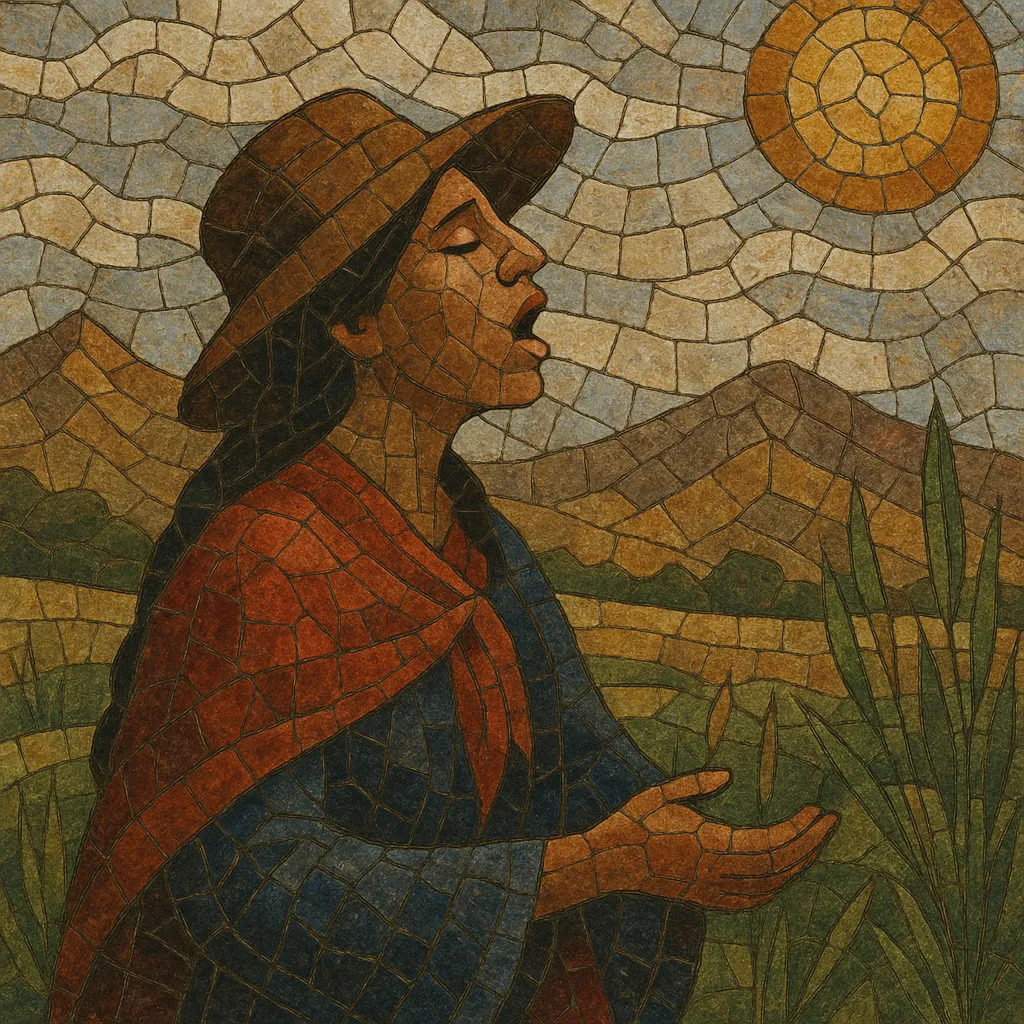Harawi is a traditional Andean song-poetry genre of Quechua origin, characterized by slow, melismatic vocal lines and deeply poetic texts about love, longing, death, and the natural world. It is typically sung solo and a cappella, in a high register with a narrow to moderate melodic range and expressive ornamentation.
Functioning historically as a lament and a love song within Quechua-speaking communities of the central and southern Peruvian Andes, harawi predates the Spanish conquest and preserves pre-Columbian poetic imagery and vocal aesthetics. While it can be accompanied softly by guitar, quena, or charango in modern practice, its archetypal form is unaccompanied voice that prioritizes text and vocal nuance over instrumental display.
Harawi is rooted in pre-Columbian Quechua oral traditions of the central and southern Andes, especially in what is now Peru. Chroniclers of the colonial era, such as Inca Garcilaso de la Vega and Felipe Guamán Poma de Ayala, documented the existence of refined Quechua song forms that resemble the harawi’s poetic and lamenting character. In its earliest practice, harawi functioned as an intimate vocal expression tied to courtship, memory, mourning, and contemplation of the landscape.
After the 16th century, harawi persisted within Andean communities, remaining primarily monophonic and text-centered. Although Spanish poetic and harmonic concepts increasingly influenced many Andean styles, the harawi retained a distinctive pre-Hispanic vocal ethos. Its neighboring and later-related form, the yaraví, blended harawi’s Quechua lament with Iberian poetic song, but the older harawi generally stayed closer to indigenous vocal declamation and modal contours.
In the 20th century, Peruvian folklorists, writers (notably José María Arguedas), and ethnomusicologists recorded and published harawi texts and performances, highlighting its poetic value and unique vocal practice. Concert artists and regional interpreters from Ayacucho and neighboring areas brought harawi material to urban stages and recordings, occasionally adding discreet accompaniment (guitar, charango, quena) while preserving its core vocal style.
Today, harawi is performed in festivals, cultural events, and academic contexts, and it continues to influence Andean repertoires. While huayno and yaraví are more commercially widespread, harawi remains an emblem of Quechua poetic song: contemplative, text-driven, and emotionally intense. Its endurance is tied to community memory and the continued transmission of Quechua language and imagery.


